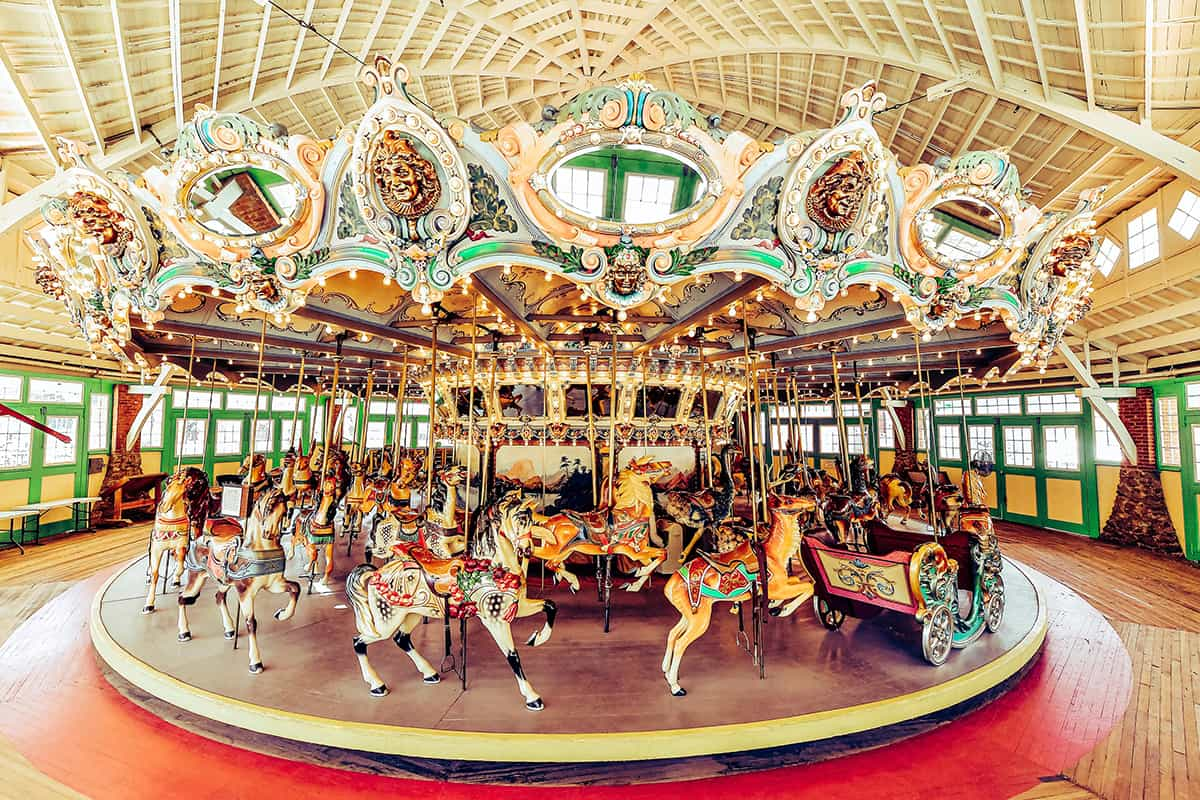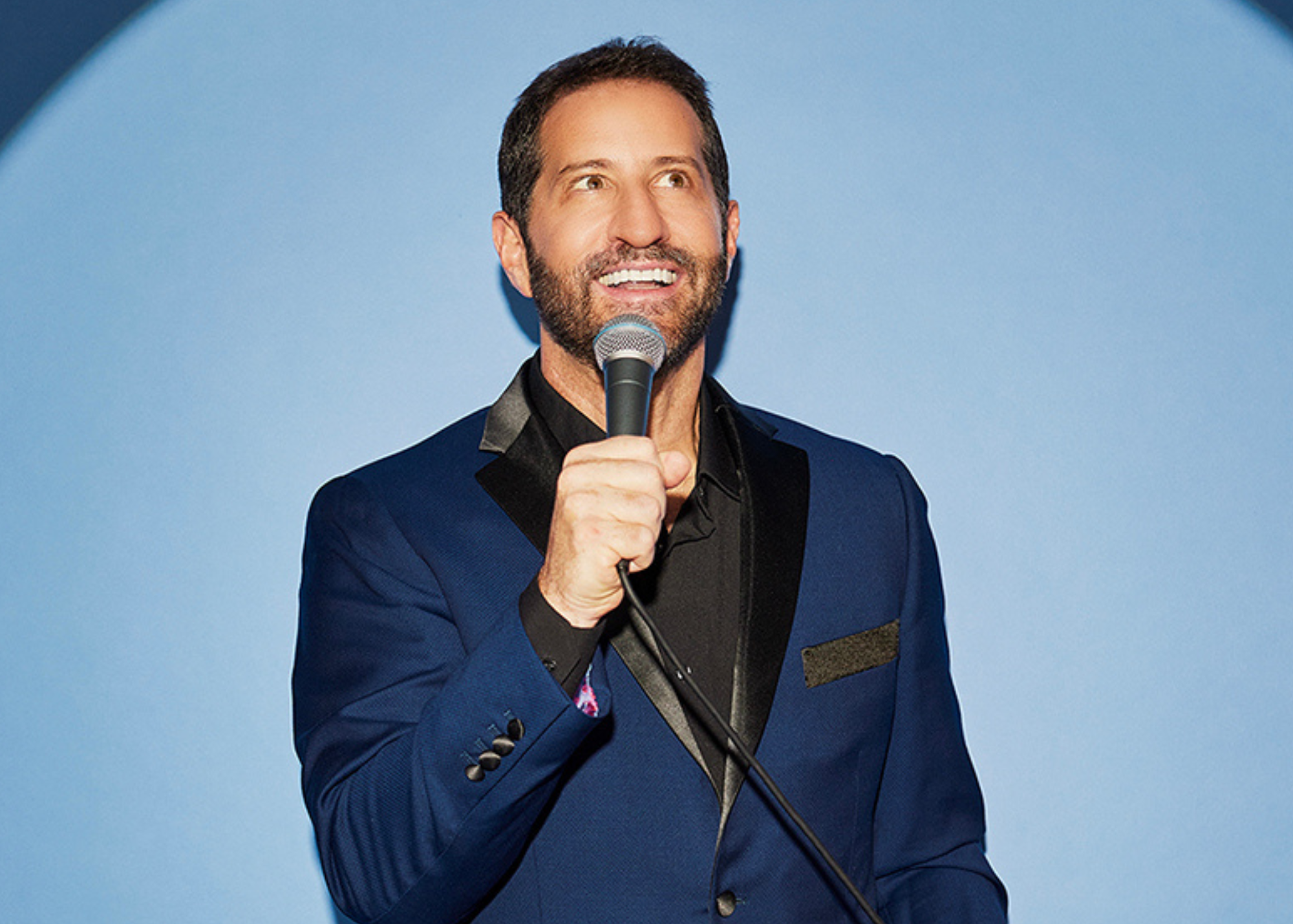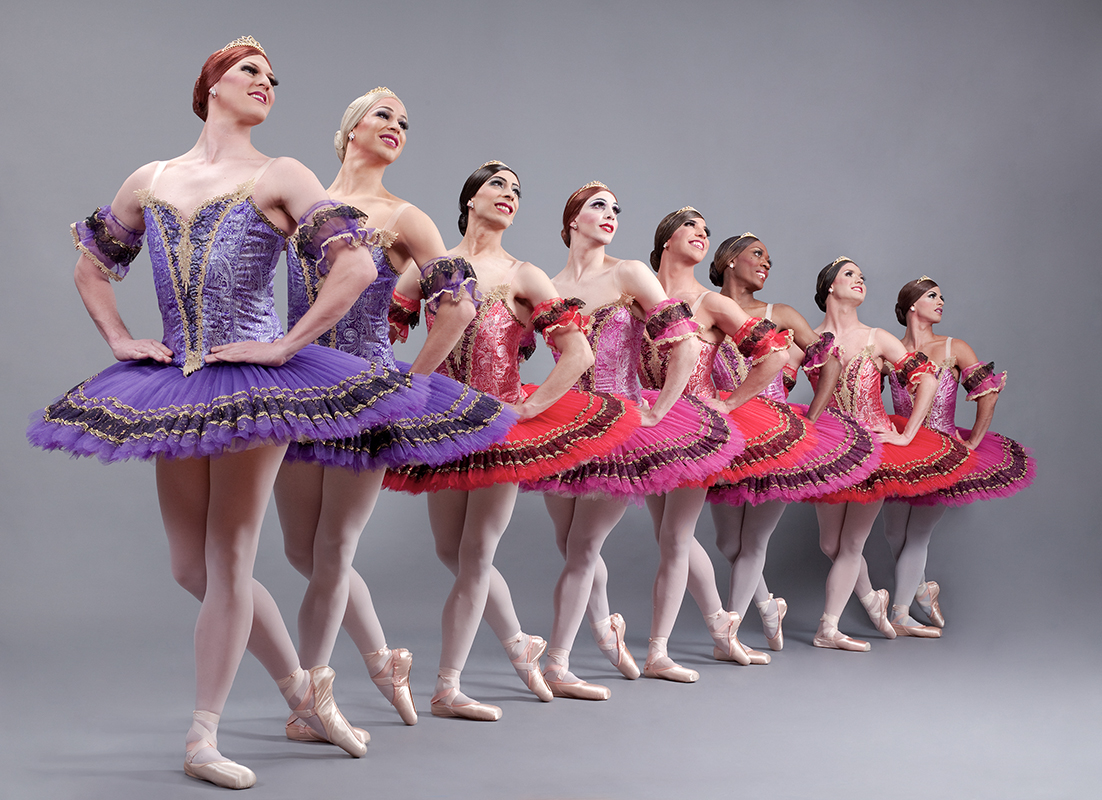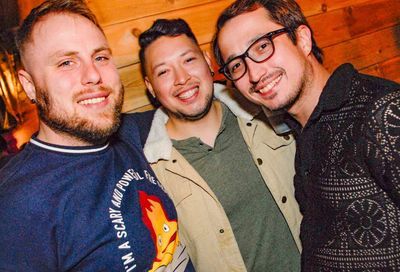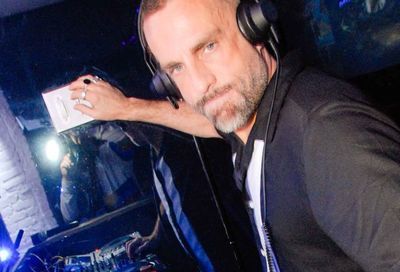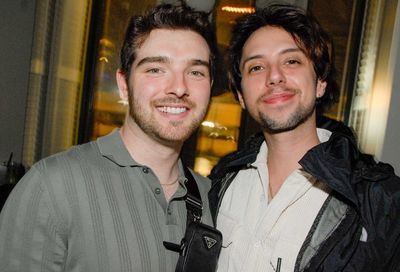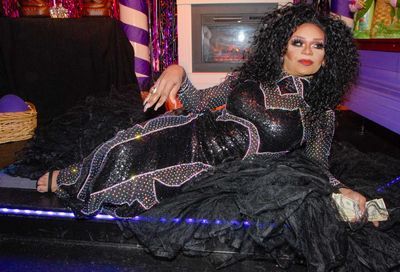Exclusive Photos: Kennedy Center’s The REACH prepares for its grand opening
The Kennedy Center will soon raise the curtain on the first-ever expansion in its 47-year history

Two weeks ahead of its September 7 opening, the John F. Kennedy Center’s much-anticipated new expansion, the REACH, is a hive of activity. Construction commenced nearly four years ago on this unprecedented addition to Edward Durell Stone’s original gold-streaked, white stone monolith, and on this uncharacteristically brisk August day in the District, construction buzzes along to complete the $250 million project in time for its 16-day REACH Opening Festival.
The festival’s nearly 500 planned events will officially inaugurate the 4.6-acre project, designed by Steven Holl Architects “as a complement to and extension of” the Kennedy Center’s artistic and educational mission. Holl’s fresh expanse of elegantly sweeping grounds — topped by a trio of matching minimal, white concrete and glass buildings arranged around a spacious plaza — houses new studios, classrooms, performance and public spaces, and even lounges and a club.
For nearly half-a-century, Stone’s familiar temple to the performing arts has stood alone, perched behind the Watergate complex on a hillside inordinately wrapped in access roads and driveways. Now, sloping southwest from the Stone building, down towards the Rock Creek Parkway running alongside the Potomac, the REACH in one fell swoop enlarges the Kennedy Center to a rolling, green campus.
Mario Rossero, the Kennedy Center’s Senior Vice-President of Education, and Brendan Padgett, Senior Press Representative, led Metro Weekly on a private tour of the REACH campus for a detailed preview of the high-profile new addition. Our tour starts at the bottom, winding across the Kennedy Center’s underground garage, which also has been expanded with an entrance into the REACH’s soaring Welcome Lobby.
From the lobby, the REACH interior cascades gracefully downhill, secreted away like the lair of an art-loving Bond villain under the city’s largest green roof, and those three white rhombuses on the surface. Sliced into above-ground and subterranean levels, the 72,000 square feet of interior space gathers plenty of outdoor light, even on a cloudy day, thanks to skylights, cutouts, and walls of windows facing in every direction. Striking, angled views of the river, and Roosevelt Island beyond, abound.
[masterslider id=”35″]
Photos: Todd Franson
Though set below-ground, the Welcome Lobby is flooded with light. While the space doesn’t evoke the sense of awe and prestige provided by entering big brother next door, there is a sense of drama provided by the glass staircase that descends into the lobby from the outdoor plaza.
The staircase, still wrapped in plastic, awaits finishing touches as Rossero describes the Roy Lichtenstein sculpture, Brushstroke, that will soon be installed on the lawn outside the welcome pavilion. The Lichtenstein will be joined on the grounds, at least temporarily, by a giant, blow-up pigeon, playfully honoring the work of the Kennedy Center’s inaugural Education Artist-in-Residence, Mo Willems, author of the popular Pigeon Book series.
Not quite primed for the pigeon, the REACH’s lush lawns still are yet to be rolled out, and construction crews work doggedly indoors hanging ceiling panels and placards directing patrons around the halls. The atmosphere of a company gearing up to open a landmark show is unmistakable. And with the clock counting down to ready the REACH for its fabulous coming out festival, there appears to be plenty of work left to do in order to meet audiences’ robust expectations.
“It’s definitely a heavy lift,” says Rossero, “but the one thing that it’s done is given every single team member a way to be part of the opening, and a way to really have ownership and celebrate. I think that’s really meaningful.” Planning and programming a world-class festival in the midst of a massive construction project has proven to be quite the team-building exercise. “We talk about how our work is matrixed and interconnected, and the REACH is the best way for us to really live that,” Rossero says.
“We’re all constantly in planning sessions, but if I’m planning for an inflatable, two-story tall pigeon to be installed in the campus, I literally have to talk to every other department to understand how that’s going to work and function. Not to mention one full day of programming where you have a hundred different artists.”

The Opening Festival’s extensive slate — featuring everything from live music, dance, and comedy, to yoga on the lawn at dawn, DJ parties at night, and a virtual reality lounge — aptly reflects the ambitious scope of the new venue and the Kennedy Center’s larger mission. “Through the festival, you’ll see every aspect of who we are in a single day,” Rossero says. “Then it repeats in different ways throughout the 16 days.”
Before there could be a festival, or the REACH, administrators at the Kennedy Center, as well as members of the community they serve, had to identify a need. Primarily, it was the same thing most residents need in a hectic city: more space.
“The Stone building is a wonderful space of a million square feet,” says Robert van Leer, Senior Vice-President of Artistic Planning at the Kennedy Center. “But we’re maxed out, because, of course, when it was envisaged in the late sixties and opened in 1971, it wasn’t imagined that it would need the amount of staff and space simply to run the operation we have with our existing seven theaters and nine stages, including Millennium Stage. So this building is full. It’s a model that made sense at the time, but no longer fulfills our need just for what we do in this building, and the expanded education program and all of the other community-facing programs we have.”
[masterslider id=”34″]
Photos: Richard Barnes
So in 2012, the administration and board began formulating plans to transform the Kennedy Center’s space to meet its changing requirements. Further, they would seize upon the opportunity, as van Leer elaborates, to determine “how could we make the public a part of who we are and what we do on a day-to-day basis?”
The resulting project and design, by Holl Architects, was unveiled in 2013, and promised to add 72,000 square feet of new interior space and nearly twice the volume of outdoor space. Holl’s designs addressed the venerable institution’s growth and connectedness to the community, with landscaped pavilions and eleven flexible new spaces for rehearsals, performances, events, cafes and classes, an outdoor stage and video wall, and a pedestrian bridge spanning Rock Creek Parkway, among several highlights. The plans were well-received, although not every one of team Holl’s ideas survived the leap from drawing board to reality. A proposed river-bound structure, designed to float on pontoons in the Potomac, “turned out to be perhaps more ambitious than the project needed it to be,” says van Leer.

Former managing director of the Nederlands Dans Theatre, van Leer was appointed by Kennedy Center President Deborah Rutter to the newly created role of Senior Vice-President of Artistic Planning just in time to be part of what he calls “the re-envisaging of what the REACH could be.” That process involved not just artistic and strategic planning — and major fundraising led by Kennedy Center Chairman David M. Rubinstein — but targeted outreach to the center’s neighbors and the community-at-large for input on how best to extend the institution’s REACH.
Rossero — who, like van Leer, joined the Kennedy Center in 2015 — mobilized a team that “did a lot of listening tours in the community when we were updating our strategy,” he says. “And the thing that I heard from every corner of the District, in Maryland and Virginia, was ‘We love the Center, even if we haven’t been there. We feel some respect for it and we have an interest, but it’s not always on a human scale,’ or ‘I might feel like I need to wear a tux to attend.’ I think the REACH is really our coming-out party around how we embrace the community. We do have spaces, we do have programming, we do have opportunities for you to linger, learn, listen, spend time with us. That’s always been true, but this just makes it more visible.”
Increasing visibility of the center’s education programs was one of the main thrusts in developing the REACH from concept to concrete. According to van Leer, it provided an opportunity to put front-and-center “that sense of process, the sense of cooperation, the sense of shared experience, and our relationship with our neighborhood” that shapes the center’s focus on education and community. And he believes that by better serving the entire DMV community, the Kennedy Center can “by extension become a leader in terms of how these worlds come together on a national and international platform.”
Not that it’s a matter of competing with fellow internationally renowned arts institutions like New York’s Lincoln Center. “I think it’s not about competition because I think we’re all striving for the same thing: How do we increase our relevance?” says van Leer. “Whether you live next door, or you live across the country, how do we make that more powerful? How do we help you to change your life, your experience, your perception of yourself as a creative individual?”
It seems the creative individuals at the Kennedy Center are as committed to the needs of their patrons and visitors, as to those of this 47-year old performing arts center and living memorial. Perhaps that commitment at least partly accounts for the REACH’s rousing, harmonious feel, inside and out, from its serene Skylight Pavilion to every sharp corner and unexpected vista overlooking the Potomac. For good reason, New York magazine architecture critic Justin Davidson described the REACH as “the rare project that improved on its way from concept and digital renderings to final construction.”

Giving credit for the project’s relatively propitious progress to Holl’s visionary concept, van Leer agrees that the (almost) finished expansion truly inspires. “The thing that really still takes my breath away is to see those arches, the walls, as they rise out of the ground,” he says, describing the curved, self-cleaning, titanium white, board-formed concrete of Holl’s three pavilion buildings.
“And if you weren’t here to see what was involved in the engineering and the physical structure, to pour a concrete wall which curves on both its axes, you know, that that was truly ambitious. It seems simple and elegant now, as it should be, but there’s real big ambition in that building. And I think that comes back to the point about why is this [project] meeting or even surpassing some of the expectations? Because he had a vision, found a way to make it happen, and we were able to deliver it. Knock wood on that.”
While many will find inspiration in these exciting new spaces — or in thrilling new encounters at the festival, attending regular programming, or simply visiting the campus — just as many might seek inspiration at the REACH by convening with the memory of the center’s namesake, John F. Kennedy.
“I think most folks find the biggest inspiration in his quotes,” Rossero says of the late president, who, along with wife Jackie, embraced the arts in daily life. “The words of JFK still have a lot of power and meaning. There are beautiful speeches where he talks about the role and power of the artist in society. I think a lot of those messages still ring true.”
As with Stone’s original building, several JFK quotes will appear throughout the REACH, and among the grove of ginkgo trees planted south of the pavilions. One such message, already emblazoned on the wall of the Welcome Lobby, exemplifies the thought process that led to the name for the center’s newest stage, and continues to define the Kennedy Center as a leader of innovation in Washington: “I believe the problems of humanity are not beyond the REACH of human beings.”
The REACH Opening Festival runs Saturday, Sept. 7 through Sunday, Sept. 22 at the Kennedy Center. Admission is free. For more information or a full schedule of events, visit www.kennedy-center.org/reach or call 202-467-4600.
Support Metro Weekly’s Journalism
These are challenging times for news organizations. And yet it’s crucial we stay active and provide vital resources and information to both our local readers and the world. So won’t you please take a moment and consider supporting Metro Weekly with a membership? For as little as $5 a month, you can help ensure Metro Weekly magazine and MetroWeekly.com remain free, viable resources as we provide the best, most diverse, culturally-resonant LGBTQ coverage in both the D.C. region and around the world. Memberships come with exclusive perks and discounts, your own personal digital delivery of each week’s magazine (and an archive), access to our Member's Lounge when it launches this fall, and exclusive members-only items like Metro Weekly Membership Mugs and Tote Bags! Check out all our membership levels here and please join us today!





